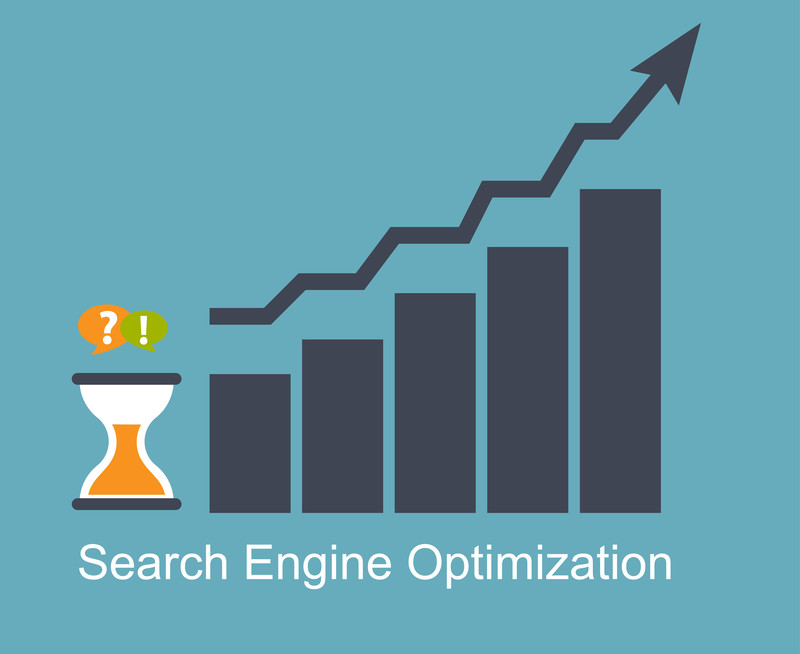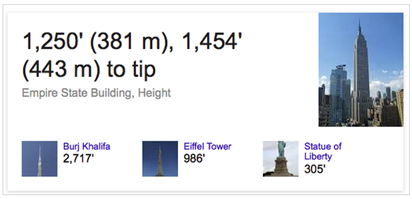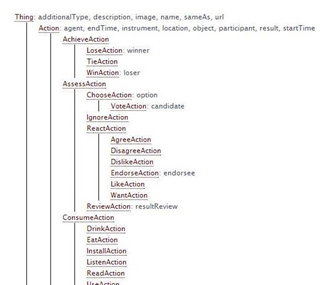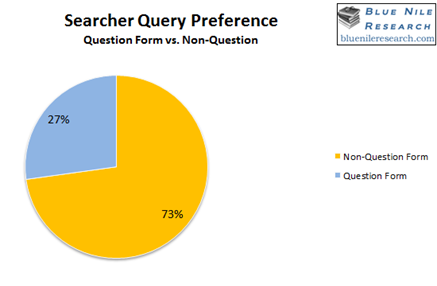
Google has emerged as a go-to channel for finding information. They even coined new words and new terms like “google” and “googling” which literally means to search for information. It’s a big responsibility for the search engine giant, that’s why Google itself is striving hard to give search users results and information that is as close as possible to their original intent.
Google’s own Senior Vice President Amit Singhal confirms this, “people communicate with each other by conversation, not by typing keywords – and we’ve been hard at work to make Google understand and answer your questions more like people do.” What they have been working on is to deliver search results based on User Intent.
This commitment ushered in a series of algorithm changes, particularly the Hummingbird algorithm that practically transformed Google into a semantic search engine. More earlier changes and updates were implemented, including the Panda and Penguin updates that focuses less on keyword densities and anchor-text placements, and more on the quality and relevance of a particular content with respect to User Intent.
What is Semantic Search?

The term “semantic” literally means “in relation to the meaning or use of words”. In terms of Search Engine Optimization (SEO) concepts, semantic search focuses on how each word used in the search query is related or linked to each other, trying to understand the meaning of that particular word combination, and the intention of the search user when he typed in these set of words.
Semantic search engines would then make use of algorithms that would intelligently match content that is relevant or related to the identified user intent. As Erin Everheart pointed out in her article at Mashable:
“Semantic search uses artificial intelligence to understand the searcher’s intent and the meaning of the query and not parsing through keywords like a dictionary. When you search now, Google gives you results based solely on the text and the keywords that you put in that search. Essentially, Google gives you its best guess.”
Take this example from Semrush that points out how semantic search is actually “conversational search”. In this example, a query is made to find the height of the history Empire State Building. Back in the early days, a query would make use of the keyword “height” together with “Empire State Building”. In this new age of semantic search, people can simply type in “How tall is the Empire State Building?” and they would get better and more accurate results that are closer to their intent.

In summary, semantic SEO will take into consideration all the words in the search query as a whole, and not just on each keywords separately. It would then intelligently try to extract the meaning and the intent behind the combination of words used – closer to the search user’s expectations.
Semantic SEO and Search Engines
Google is able to deliver search results based on the semantics of a search query through the use of a search engine component they call the Knowledge Graph and recently the Knowledge Vault. Google however, does not have the monopoly on semantic search. When campaigning for the Semantic SEO, you should also take into consideration other channels that are now actively using semantic search principles such as:
- Bing’s Snapshot, Microsoft’s answer to Google’s Knowledge Graph
- The major search engines like Bing, Yahoo and Google took part in a collaborative initiative called org, which make use of structured HTML terms and tags that is intended to help facilitate the semantic matching of results with search queries

An example of a Schema.org hierarchy
- Before Google officially delved into the Semantic Web, there already existed natural search engines like Powerset. These search engines were already making use of semantic search algorithms that were intended to look for the meaning behind the combination of the words in the search query as a whole, and not on individual keywords. Microsoft later bought Powerset to compete with Google by proving search users a more semantic-based search engine. After that, Microsoft launched Bing.
- Another natural search engine is Hakia, which made use of its SemanticRank algorithm in its search results, then display the results in what they call “the Gallery”, which is basically a rich media SERP. Many sites are already powered with the Hakia engine, although public access to the Hakia website has been closed down since April 2014.
The complete rollout of the Knowledge Graph and the release of the Hummingbird updates cemented Google’s commitment to the semantic web. This is not only in line with Google’s goal of providing relevant and useful content that is based on user intent, but it is also inline with Google’s commitment to crack down on black-hat SEO strategies and poor quality content.
User Intent and Semantic Search

Source: Confluent Forms
A Semantic SEO campaign is focused on delivering content that can answer conversational queries closer to the user’s intent. Your SEO activities should not only focus on individual keywords but also on creating content that is based on providing answers to the search user’s querries. Content should be focused in identifying User Intent, or what the search user was actually meaning to when trying to look for information.
User Intent and Keyword Research
Although keyword research remain a very important element in Semantic SEO, changing the way how these keywords are researched will bring your content closer to user intent and its variations. When researching for keywords, you should take into consideration the following:
- Core Keywords – these are keywords that include your targeted sets of keywords plus variations that are closer in meaning to or are actually synonymous to your targeted set. When a search query is made using these related keywords, your content may be considered because it is related or relevant to the user’s intent
- Thematic Keywords – these sets of keywords make use of your primary keyword set plus other keywords that are related to in concept or meaning to your primary target set. For example, if one of your targeted keyword set is “diet plan”, a thematic keyword set that you may consider would be the phrase “weight loss diet ”
- Stem Keywords – these sets takes the thematic keyword set further by anticipating what other questions search users may be using when making their querries. To take the diet plan example earlier, stem keyword sets may include “low carb diet meal plan” or “best fat-burning diet”

In Semantic SEO, the use of longer and more-specific keywords are now considered as best practices, as these types of keywords can match more easily with the intent and meaning of the search query. It is also important that you take into consideration the variations and thematic equivalent of possible search queries so your content can get a wider reach in terms of catering to user intent. A study by Blue Nile Research shows this variations in search queries, with 27% of users using the question form while the rest make use of the non-question form.

Source: Blue Nile Research
Looking into this even deeper, the study found out that as much as 38% of search queries in question form made use of the “How” term as the most used question type phrase. People are always looking for answers or solutions to problems when making search queries, so questions beginning with “how” would be the most logical and natural thing people would use.

Source: Blue Nile Research
Integrating User Intent into Your Content
Now that you’ve understand the importance of user intent on your SEO campaign in this new world of the semantic web, its now time that you also begin to understand how you can optimize your content and get it ready to answer user intent during semantic searches. The following practical steps can put you on the right path in this regard.
1) Content Reframing
Semantic search engines now are trying to answer the questions of search users during their querries by returning search results that are relevant or closer to user intent. In line with this, your content should be geared towards trying to answer these querries and their variations.
In Semantic SEO, the use of traditional strategies like keyword stuffing will not work anymore. Optimizing for the semantic web means reframing your content so that it can meet the needs of the search user while it relates directly and relevantly to the keywords you’ve identified for each of your pages.
2) Use of Structured Data Markup
To make it easier for semantic search engines match your content with search user intent, it would be best to markup your content with tags like the ones defined by Schema.org. You can also make use of tools available through the Google Webmaster Tools. These tools include the Structured Data Testing Tool and the Structured Data Markup
3) Align with Social Media
Social media is a very important channel that you should take advantage of. In fact, social signals were confirmed as important ranking factors in search results, particularly in this new era of the semantic web. By aligning with social media, you can gain insight as the pulse, needs, interests and trending topics that are important to your targeted audiences
4) Continue with SEO Activities
Although there are many changes to search algorithms with the several updates launched in recent periods, you should still continue with existing SEO activities. This is applicable only to pages and websites that do not make use of black hat tactics and other similar activities. Your focus should dwell more in creating and providing content that solves problems and answer querries
User Intent and the Future of Search
It was Jakob Nielsen who preficted over nine years ago that the current iteration of the search engine then, will eventually transform itself in answer engines. Barbara Starr of Search Engine Land agrees to what Jakob had predicted saying, “Evolving into answer engines is the natural, long-term goal of search engines.”
Developers are churning out on semantic search and are coming out with alternatives to mainstream search engine. A good example is the story of the graduating student who created his own semantic search engine based on Google’s code, called ThisPlusThat.me (the site is no longer available as of 2015)
To wrap things up, Semantic SEO is all about matching your content with user intent, not only in contextual terms but also with the relationship of these terms and how it will eventually be of use to many people. Streamlining your Semantic SEO against user intent will optimize your campaigns and get your site up-and-running and ready for the semantic web and your target audiences.
Jomer B. Gregorio is a well-rounded expert when it comes digital marketing. Jomer is also known as a semantic SEO evangelist and practitioner. Check out our Digital Marketing Services today and let us help you in achieving positive and profitable results for your business.
